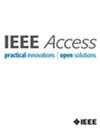仰角对低轨道多波束卫星通信系统的影响
IF 3.4
3区 计算机科学
Q2 COMPUTER SCIENCE, INFORMATION SYSTEMS
引用次数: 0
摘要
与成熟的地球同步赤道轨道(GEO)卫星网络相比,低地球轨道(LEO)卫星带来了新的挑战,如不同仰角下卫星足迹的畸变。文献中没有充分研究仰角对系统行为的影响,也缺乏参数化低轨道系统的指导方针。本文通过提供一个框架来分析任意具有大型天线阵列的多波束卫星系统的卫星足迹行为,并分析在ka波段(30GHz)运行的LEO卫星在不同仰角和服务区域大小下的系统行为,从而解决了这些空白。该分析考虑了天线阵的方向性和天线阵的方向性以及地球的曲率。所提供的框架允许重复分析,并提供了一种在服务区域大小、波束设计和操作仰角方面参数化系统的方法。对卫星仰角的分析证实了卫星仰角对系统性能的强烈影响,表明在未来技术评估中需要考虑近地轨道系统仰角依赖性。结果表明,系统从高仰角的限噪区漂移到随仰角减小的限噪区。研究结果表明,实际系统的最小仰角为30°,因为较低的仰角会导致过度的传播损耗和严重的波束畸变干扰。链路预算分析进一步表明,系统需要具有大增益的高定向天线来服务手持用户设备。本文章由计算机程序翻译,如有差异,请以英文原文为准。
Impact of Elevation Angle on Multi-Beam LEO Satellite Communication Systems
Compared to well-established geosynchronous equatorial orbit (GEO) satellite networks, low Earth orbit (LEO) satellites bring new challenges to overcome, such as the distortion of the satellite footprint with varying elevation angle. The impact of the elevation angle on system behavior is not sufficiently studied in literature, and guidelines to parameterize LEO systems are lacking. This paper addresses these gaps by providing a framework to analyze the satellite footprint behavior of arbitrary multi-beam satellite systems with large antenna arrays and analyzing the system behavior of a LEO satellite operating in the Ka-band (30GHz) for varying elevation angle and serving area size. The analysis considers the directivity and antenna array steering of the antenna array and the curvature of the Earth. The provided framework allows repeatable analysis and offers a means to parameterize systems in terms of serving area size, beam design, and operating elevation angles. Analysis over elevation angles confirms the strong influence of the satellite elevation angle on the system performance and indicates that elevation angle dependence of LEO systems needs to be considered in the evaluation of future technologies. It is shown that the system drifts from a noise-limited regime at high elevation angles to an interference-limited regime with decreasing elevation angle. The findings suggest a minimum elevation angle of 30° for practical systems, as lower elevation angles show excessive propagation loss and severe interference due to beam distortion. Link budget analysis further indicates that systems require highly directional antennas with large gain to serve handheld user devices.
求助全文
通过发布文献求助,成功后即可免费获取论文全文。
去求助
来源期刊

IEEE Access
COMPUTER SCIENCE, INFORMATION SYSTEMSENGIN-ENGINEERING, ELECTRICAL & ELECTRONIC
CiteScore
9.80
自引率
7.70%
发文量
6673
审稿时长
6 weeks
期刊介绍:
IEEE Access® is a multidisciplinary, open access (OA), applications-oriented, all-electronic archival journal that continuously presents the results of original research or development across all of IEEE''s fields of interest.
IEEE Access will publish articles that are of high interest to readers, original, technically correct, and clearly presented. Supported by author publication charges (APC), its hallmarks are a rapid peer review and publication process with open access to all readers. Unlike IEEE''s traditional Transactions or Journals, reviews are "binary", in that reviewers will either Accept or Reject an article in the form it is submitted in order to achieve rapid turnaround. Especially encouraged are submissions on:
Multidisciplinary topics, or applications-oriented articles and negative results that do not fit within the scope of IEEE''s traditional journals.
Practical articles discussing new experiments or measurement techniques, interesting solutions to engineering.
Development of new or improved fabrication or manufacturing techniques.
Reviews or survey articles of new or evolving fields oriented to assist others in understanding the new area.
 求助内容:
求助内容: 应助结果提醒方式:
应助结果提醒方式:


